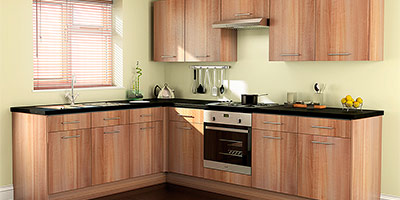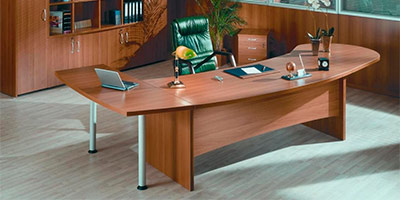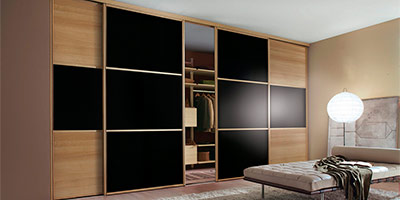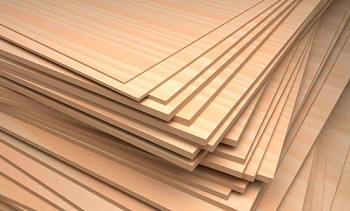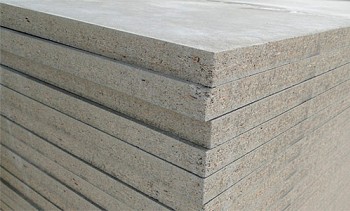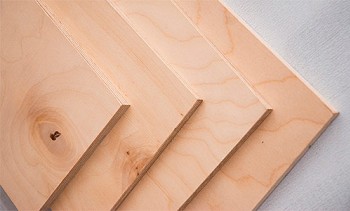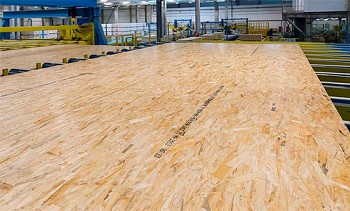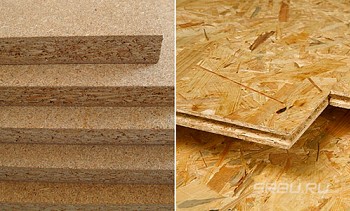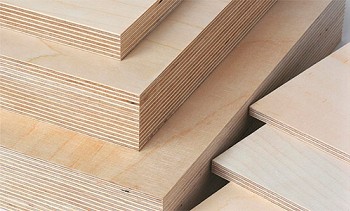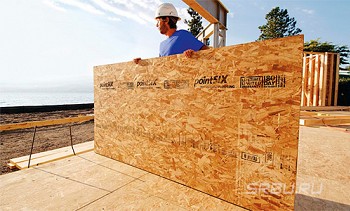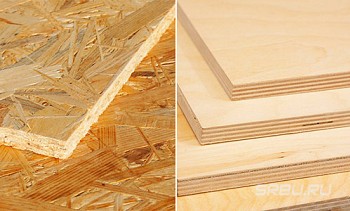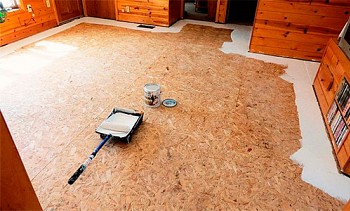Chipboard properties and characteristics
Among the materials used for the construction and manufacture of furniture, an important place is occupied by wood chipboard. What is chipboard, what types of material exist, what are the areas of application and the level of manufacturability of the material, how to use it and what to expect from it? Answers to these questions will be given by an overview of the properties and characteristics of particleboard.
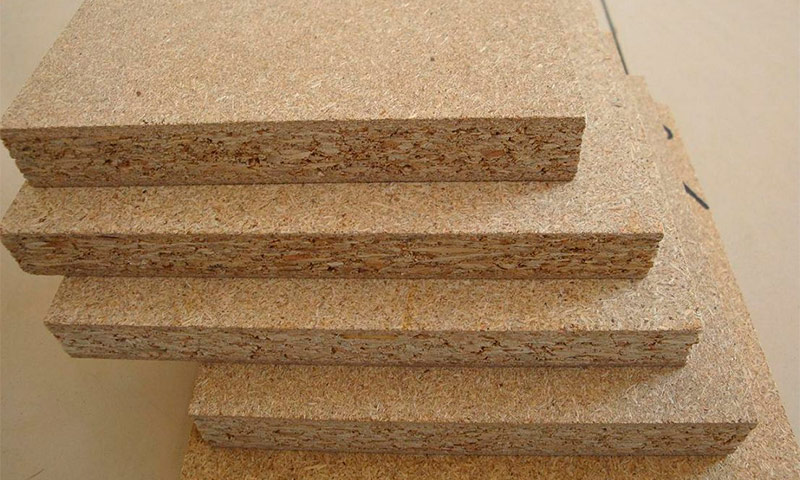
Content:
What is chipboard
Chipboard is a sheet material obtained by pressing from small wood chips that are glued together with glue. The idea of creating such a composite appeared in 1918. Initially, it was proposed to produce a chipboard with double-sided plywood lining. In the following decades, manufacturing technology was refined and improved. The first commercial chipboard factory was launched in 1941 in Bremen, Germany. The widespread distribution of wood waste boards began after the end of the war.
Interest in the new material is due to several reasons:
- ease of obtaining large parts;
- shape and size stability;
- using waste instead of scarce wood as raw material.
Due to the mass production of particleboard, the amount of irretrievable losses of wood during logging and processing of wood was reduced from 60 to 10%, and the construction and furniture industry received convenient, technologically advanced and cheap material.
Chipboard types
There are several types of particle board:
- pressed;
- laminated;
- moisture resistant;
- extrusion.
1. Pressed chipboard It has sufficient strength and is used as a structural material in construction and for the manufacture of furniture.
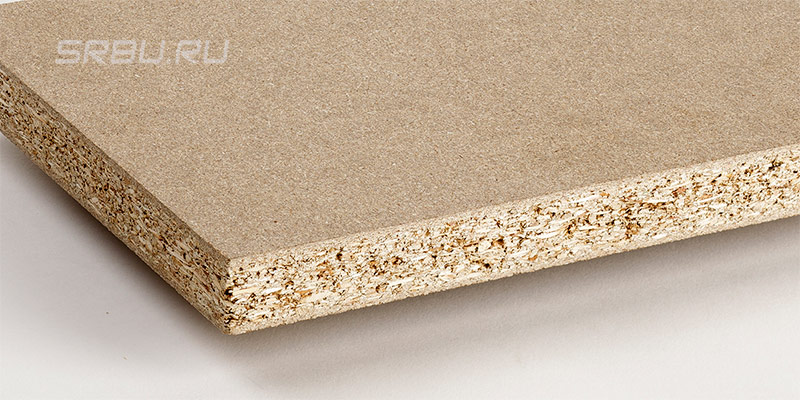
2. Laminated chipboard - This is a pressed plate coated with a layered coating of paper impregnated with melamine-formaldehyde resins. Lamination increases the surface hardness and wear resistance of the plate. A pattern is printed on paper that serves as a decor. During the coating process, it can be given a texture that enhances the decorative qualities of the laminate.
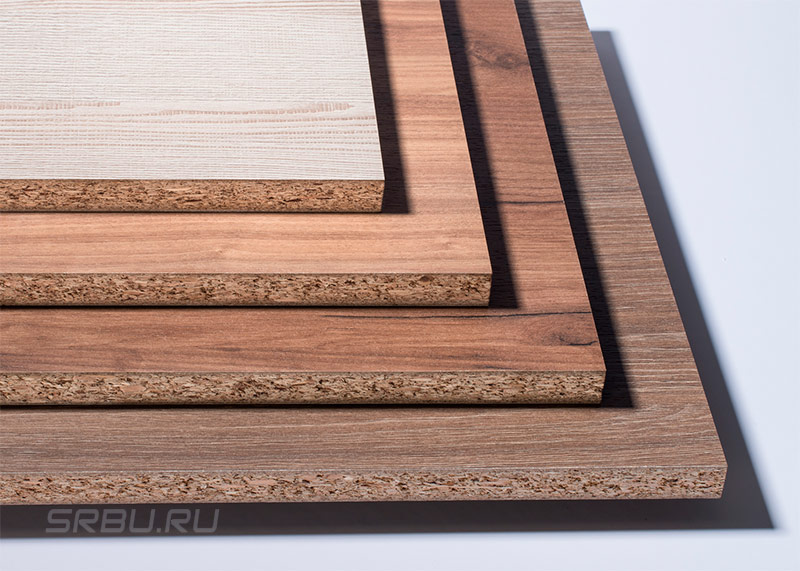
3. Moisture-resistant chipboard,intended for use in wet conditions. Its resistance to moisture is achieved by adding hydrophobic additives to the binder.
4. Extrusion (extruded) plate does not have pressed strength, since it is denser less, and the chips in it are located perpendicular to the plane of the plate. This material is used for soundproofing.
Pressed laminated and non-laminated chipboard are the most common and sought-after types. It is about them that we will discuss later.
Pressed plates, in turn, are divided into several parameters:
Strength - to groups P1 and P2. The first is general-purpose stoves, the second is material for the manufacture of furniture and other indoor applications.
By structure - to ordinary (O) and fine-grained (M). Slabs of group M are preferable for lamination, since the lining is better laid on them.
Surface treatment - for polished (Ш) and unpolished (НШ).
By surface quality - for grades I and II, for each of which the GOST defines a list of permissible defects and their number.
By class of issue - to classes E0.5, E1 and E2. They differ in the maximum permissible formaldehyde content in the material and its release into the air. For indoor use, only classes E0.5 and E1 are allowed.
How to make chipboard
Non-business wood and almost any wood waste generated during any processing, starting from tree felling, are suitable for the manufacture of chipboard:
- substandard round logs and branches;
- slabs, remains from edging of boards, trimming;
- wood chips, shavings, sawdust.
Production consists of several stages.
Raw material preparation
Lumpy waste is crushed into chips. Chips and large shavings are used to produce chips of the required size: from 0.2 to 0.5 mm thick, 5–40 mm long, and up to 10 mm wide.
The round timber is cleaned of bark, cut into measured segments, usually 1 m long, and after soaking it is split along the fibers into small fragments with subsequent grinding to the desired condition.
The plate has a three-layer structure. The outer layers are made of small chips, and the core is made of larger ones. Therefore, the mass of chips is separated and the part that is intended for the outer layers is further crushed. After drying, sorting takes place. By sieving, unsuitable fractions are separated and redistributed, and too large chips are returned to grinding.
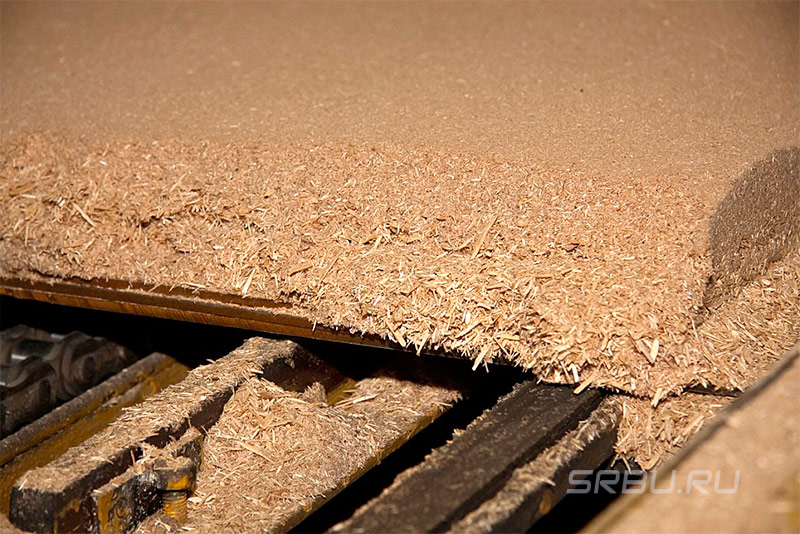
Forming and pressing
Prepared chips are mixed with synthetic resin, which is part of the chipboard as a binder. This operation is carried out in a special machine, where the resin is sprayed onto small droplets and settles on the surface of wood particles "suspended" in the air stream. This mechanism allows you to glue the entire surface of the chips and prevent resin overruns.
The tarred chips enter the dispenser, which places them on a conveyor belt or pallet, forming a layer of a given thickness. Three layers are stacked sequentially, in accordance with the three-layer structure of the chipboard. The resulting "carpet" is divided along the length into packages of standard size, and fed into a vibrating press for preliminary compaction. After preliminary pressing, briquettes are obtained that can withstand movement in the main hydraulic press.
Before pressing, the briquettes are heated to 75aboutC using microwave radiation. In the press, they are affected by a temperature of 150-180aboutC and temperature 20–35 kgf / cm2. Under pressure, the material is compacted, and heating causes the binder to harden.
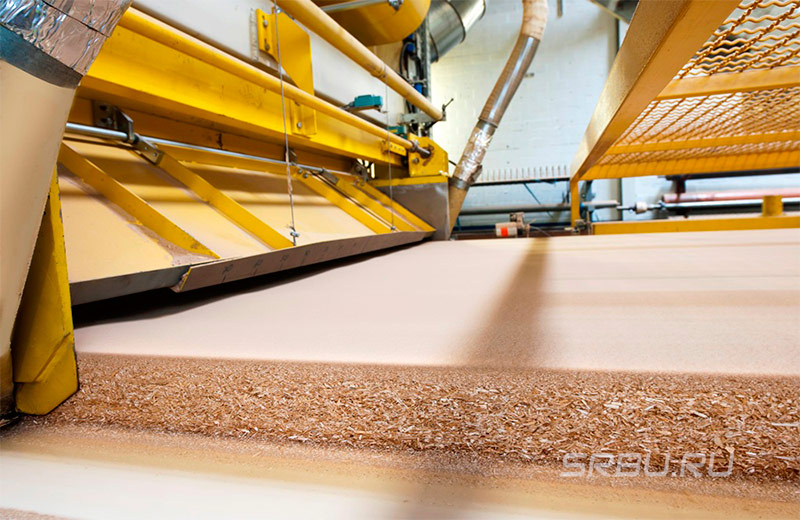
Full readiness
After pressing, the finished sheets of particleboard are cooled by air flows, then stacked in the feet and left for several days. During this time, the temperature gradually equalizes in the material and internal stresses are removed.
Until complete readiness, the material is polished and cut into sheets of a given format. After that, they are marked and packaged for shipment to the consumer. In the manufacture of furniture or tiles, a lamination step is added to the process chain.
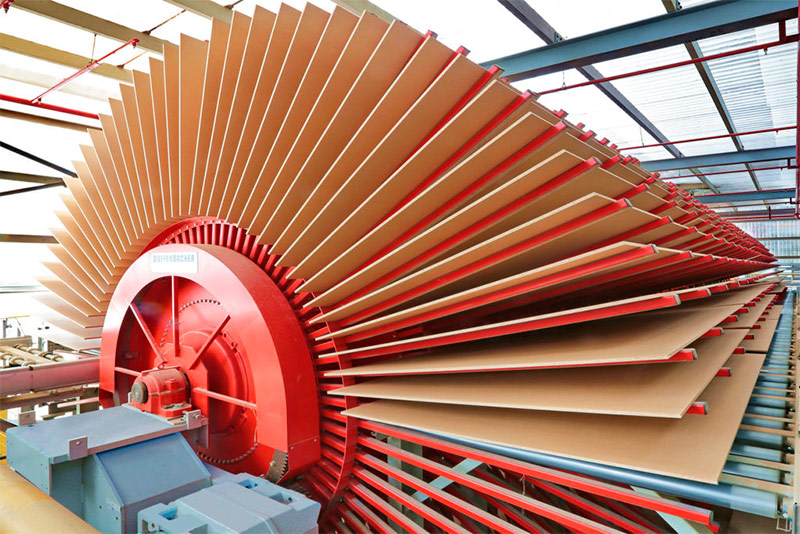
Chipboard Standard Sizes
Production offers several standard chipboard sheet sizes:
- 2440x1220 mm;
- 2440x1830 mm;
- 2750x1830 mm;
- 2800x2070 mm.
The last format on this list is not provided for by Russian GOST, but some foreign companies supply laminated sheets of this size. The thickness of the material usually meets the standards adopted in furniture production: 10, 16, 18, 22 and 25 mm.
Maximum permissible size deviations according to GOST 10632-2014:
| By thickness, mm | Length mm | Width mm |
|---|---|---|
| +/- 0.3 - for polished | +/- 0,5 | +/- 0,5 |
| -0.3 / + 1.7 - for unpolished |
Main characteristics of chipboard
Chipboard strength and density
The strength of a chipboard is determined by its belonging to one of two groups - P1 or P2. Plates P2 have a higher bending strength - 11 MPa versus 10 MPa in group P1. They are almost one and a half times more resistant to delamination. The density of the sheets of both groups is 550 - 820 kg / m3.
One aspect of strength is the ability to hold fasteners. A screw, screwed into the plate face, can withstand a pulling load of 3.5 to 5.5 kg per millimeter of length. When installed at the end, the ultimate force is less - 3.0-4.5 kg / mm.
| Indicator | Cooker P1 | P2 plates |
|---|---|---|
| Density, kg / m3 | 550-820 | |
| Impact strength, j / m2 | 4000-8000 | |
| Hardness, MPa | 20-40 | |
| Specific Resistance to Pulling Screws, N / mm, from Plasti | 55-35 | |
| Specific resistance to pulling screws, N / mm, from the edge | 45-30 | |
Chipboard moisture resistance
Particleboard resistance to moisture is not regulated. This material is intended for dry conditions only.Although there are moisture resistant versions that are made with the addition of a water repellent.
Biological resistance
The biological resistance of particle boards is quite high. They are not damaged by insects, they do not take root on the fungus. The stove can completely collapse from moisture, but it will not rot.
Fire safety
When assessing the fire hazard, chipboard should be considered as wood. The composite belongs to the same G4 combustibility group, although it ignites and does not spread fire as readily as wood.
Environmental friendliness
Particleboard is safe enough for people, but when using it, you need to pay attention to the class of emission, which depends on the level of formaldehyde emission into the air. Material of class E2 can not be used inside residential premises, for this purpose plates of class E1 are intended. For children's rooms, schools, kindergartens, nurseries, hospitals, class E0.5 stoves should be used, which contain a very small amount of formaldehyde and their effect on the indoor air composition is negligible.
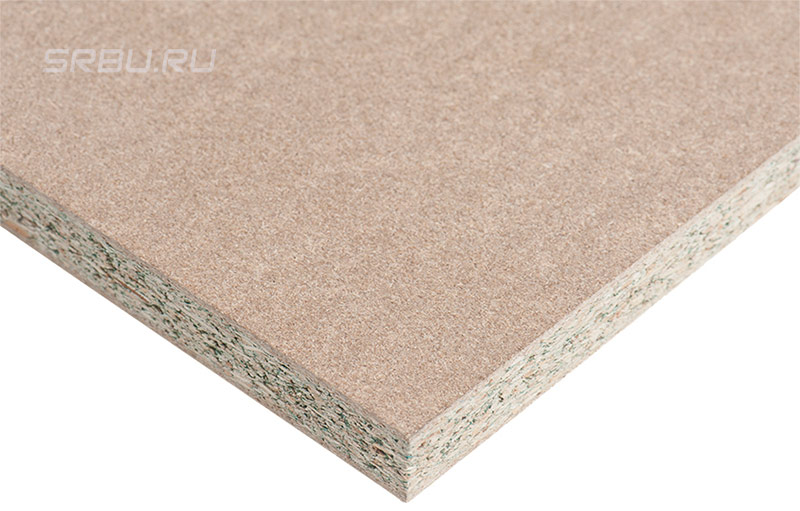
Thermal conductivity
The thermal insulation qualities of particleboard are small, but they should be taken into account when using it as a wall covering, ceiling or floor. The average thermal conductivity of the plates is 0.15 W / (m ∙ K). With a thickness of 16 mm, the thermal resistance of the casing per square meter of area will be 0.1 (m2∙ K) / W. For comparison: a 390 mm thick ceramic brick wall has a thermal resistance of 2.22 (m2∙ K) / W, and a layer of mineral wool 100 mm thick - 0.78 (m2∙ K) / W. Nevertheless, chipboard lining, especially together with the air gap behind it, can become a noticeable addition to insulation.
Vapor permeability
Permeability to water vapor is an important characteristic of chipboard, if it is used in external building envelopes. At a permeability of 0.13 mg / (m ∙ h ∙ Pa), the material cannot serve as a vapor barrier, but when cladding from the outside, good vapor permeability will contribute to the removal of moisture from the wall.
Manufacturability of chipboard
In terms of convenience and economy of use, chipboard is very superior to wood. This parameter has no numerical expression, but several facts illustrating the advantage of particleboard in this regard can be given.
Minimum operations in the manufacture of products
In order to make furniture or another design from a chipboard, you need to perform several basic actions:
- cutting a sheet into parts of the right size;
- drilling holes and sockets for fasteners and fittings;
- installation of accessories and assembly.
In many cases, drilling as a separate operation is missing. When using a laminated plate, painting with concomitant preparation is not required, only the edge lining is required, which is done on special machines and does not require special efforts.
The most difficult operation in the manufacture of furniture is the cutting of parts of complex curved shape. But the number of such parts is usually small.
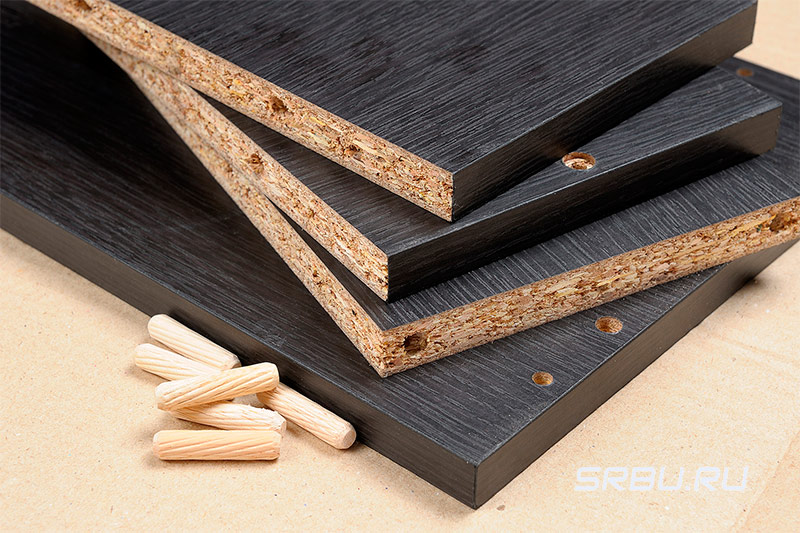
Compare the following with the steps required for a wood product:
- sawing;
- planing;
- fair planing (surface gage);
- cutting into parts;
- milling, often necessary for joining parts;
- sealing defects;
- grinding;
- painting.
If large parts are required, the operations of gluing the shield from the rails or assembling a large part from small ones are added, since the width of wooden boards usually does not exceed 300 mm. In this way, countertops and cabinet doors are made. And this is just the preparation of parts that need to be combined into a product!
Easy assembly operations
When mounting accessories on parts made of chipboard, drilling for fasteners is often not required. For wood, it is required more often, especially for hardwood. Particleboard drilling is easier than wood. A chipboard is less demanding on the accuracy of installation of fasteners and accessories. All this reduces labor costs in the workplace.
Product Stability
Chipboard, unlike wood, does not change size when humidity fluctuates.Details from it do not crack in the summer heat, they will not be distorted, nowhere will there be an extra gap or a strip of unpainted surface, as is the case with wooden doors. During normal use, a chipboard product remains unchanged for many years.
Chipboard Applications
Chipboard is used wherever large area parts are required.
Furniture manufacture
In the furniture industry, a laminated board is used. This immediately removes issues regarding surface cladding. The choice of decors is very large and allows you to satisfy almost any request. Despite some plasticity of the material, the correct arrangement of the parts gives the products excellent rigidity.
Most often made of chipboard:
Writing and computer tables.
It is convenient to make all kinds of tables, shelves, superstructures, partitions from flat parts.
Cabinets, including built-in racks, filling wardrobe rooms.
This furniture is dominated by large parts, and the slab material is best suited for this.
In some cases, the weight of the furniture is important. It can be calculated in advance, knowing how much a chipboard sheet weighs, its area, and the total area of the product details. For example, for the manufacture of a desk or a small wardrobe, you need one standard sheet in the format 2750x1830. With a thickness of 16 mm, it weighs 57 kg. About as much will weigh a table or cabinet. For a more accurate calculation, the specific gravity of the plate should be used - 11.4 kg per square meter. Having tabulated the dimensions of all the parts, it is easy to calculate the weight of the product.
Construction
Examples of the use of chipboard in the construction industry:
- sheathing of frame structures;
- interior decoration;
- creation of volumetric interior elements;
- manufacture of partitions;
- leveling the floor for finishing;
- manufacture of formwork and auxiliary structures.
In construction, the most commonly used non-laminated particleboard.
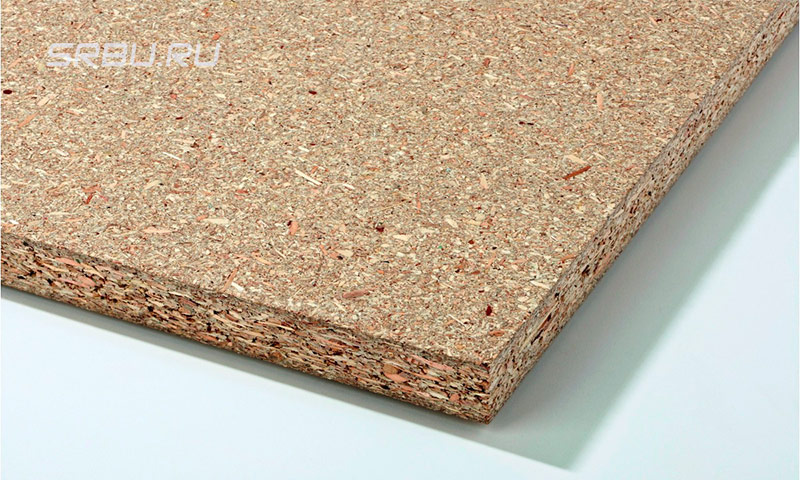
For any use, it is necessary to exclude the possibility of wetting the material.
- External cladding of frame walls is permissible only under a ventilated facade.
- Structures reaching the floor, such as partitions, must be protected from moisture. A clearance of 10 mm along the bottom edge is sufficient for this. The gap is overlapped by the baseboard.
- When used as a rough floor, you need to make high-quality waterproofing.
- For the manufacture of formwork, it is necessary to protect the working surfaces with a film.
For any application, it is important to choose the right board with the right characteristics. And then the required result will be obtained.

